Venturing Abroad by a Family of Four – Grandparents, Mom, Teenage Daughter
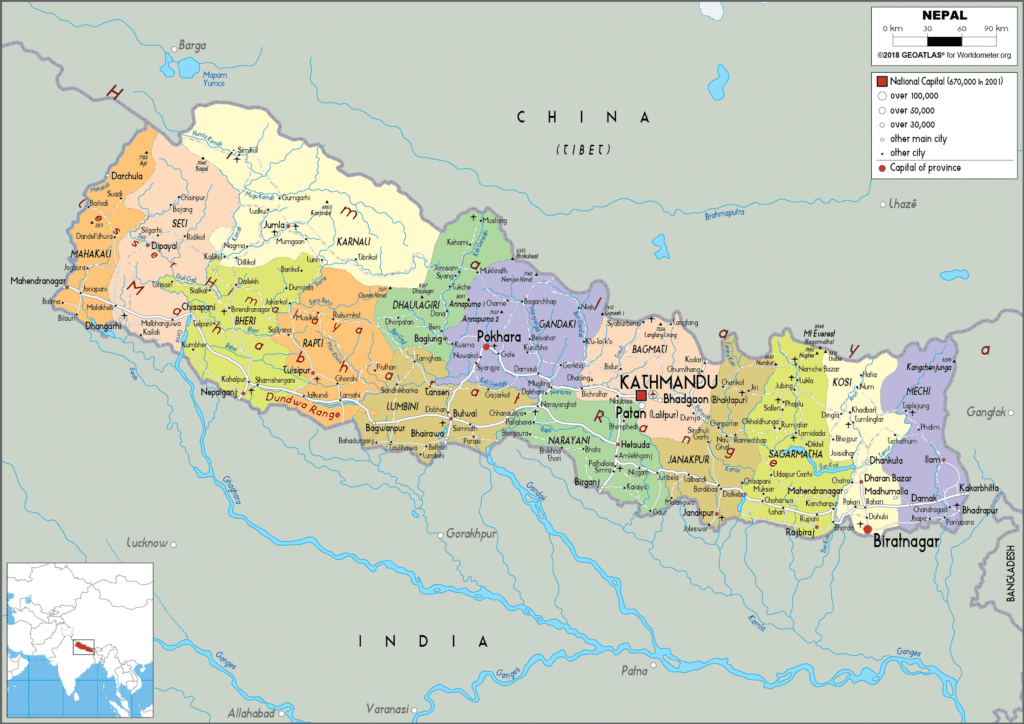
Nepal, the land of the Himalayas! We had always wanted to visit this great Hindu kingdom, where, in Lumbini, Siddhartha Gautama (Buddha) was born and Janakpur, where Sita was wed to Sri Ram. Also the land of the great sherpas – the elite mountaineers whose expertise, hardiness and experience of high altitudes had helped countless explorers and mountaineers (including Edmund Hillary) scale Everest. We were indeed privileged to get the opportunity to visit this country.
Fortunately, no visas or passports were required for Indians visiting Nepal. Our departure via Royal Nepal Airlines was at 5:25pm on 18th April, 2016. The weather was inclement that night and as we flew above the clouds, we could see bolts of lightning below us. It was an exciting first flight for my 10-year-old daughter. We landed at the Tribhuvan International Airport at Kathmandu. Our driver and vehicle, organized by Nepal Tourism, was there to pick us up, and in the pouring rain, drove us to the beautiful, heritage Manaslu Hotel by 11pm.
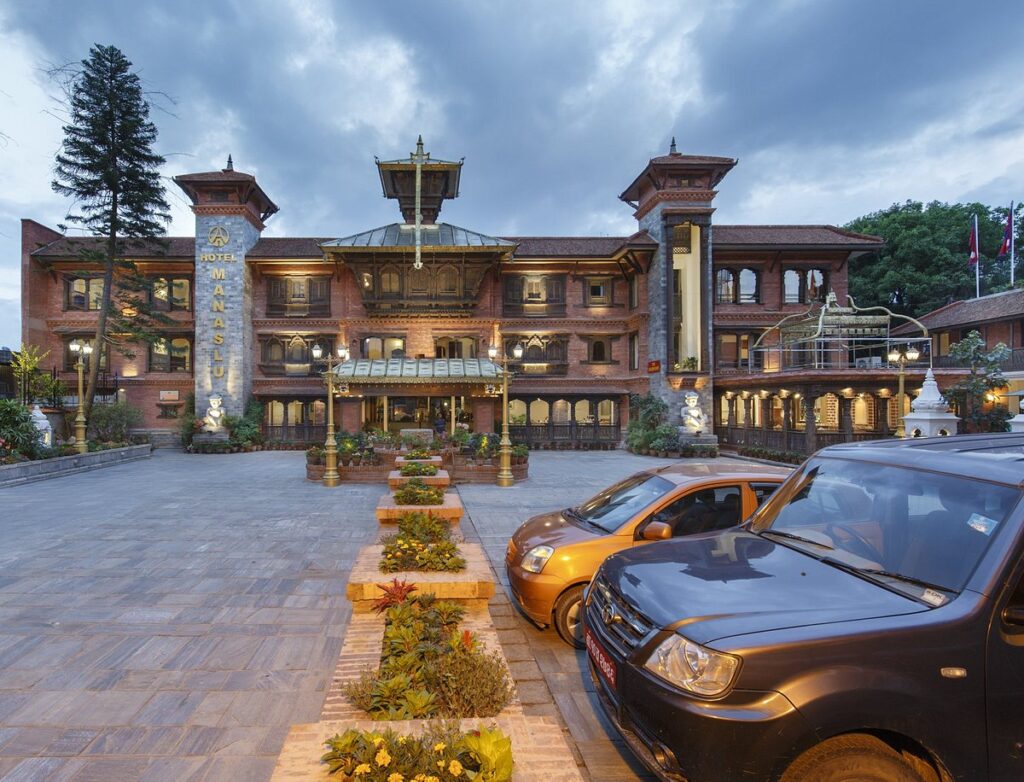
After breakfast the next morning, we drove to the Pashupatinath temple, where, for the first time I saw the board, “Entry for Hindus Only”. Pashupatinath temple, dedicated to Lord Shiva, was located on the banks of the Bagmati River in Kathmandu. It was a UNESCO world heritage site and built in the 16th century. We bought a basket of flowers and other pooja essentials and leaving our footwear outside, entered the massive temple complex. We were approached by a priest who took us around the complex and helped Appa perform a pooja for the well-being of the whole family. We saw the Panchmukhi Shiva, the maze with 525 shivalingas, ashrams, smaller temples and shrines. After walking through the whole complex, we thanked the priest and left with the prasad.
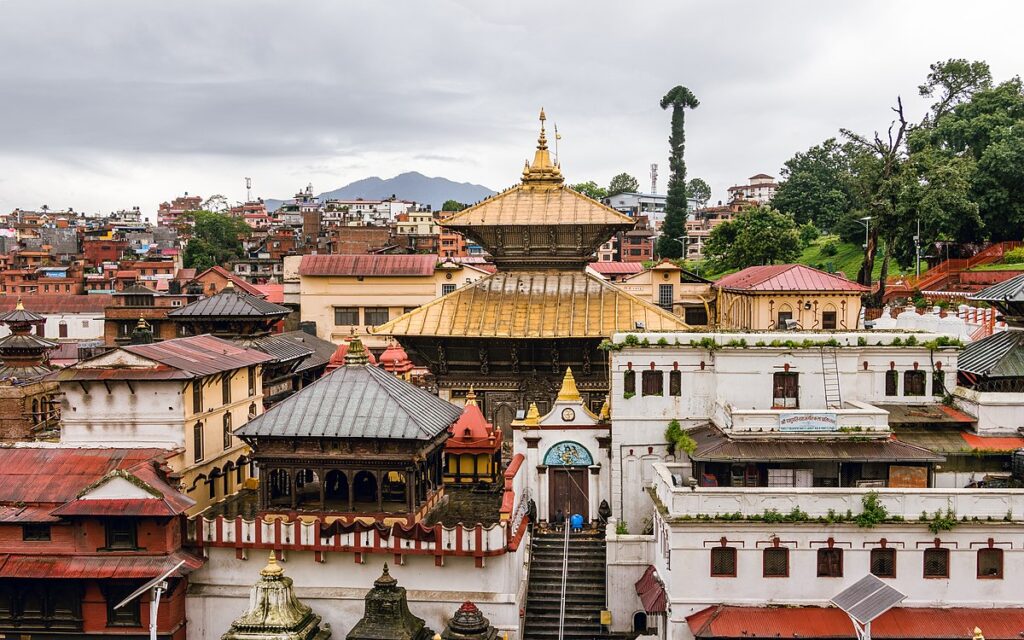
Our next stop was the Swayambhu temple, a 30-minute drive from Pashupatinath. Swayambhu in Sanskrit means self-manifested or self-born, and the white stupa with Buddha’s eyes was built on a self-sprung flame in a lake, according to legend. For the Buddhists in Nepal, this was the most sacred temple in the world. For the Tibetans in Nepal, it was the second only to Boudha, another Buddhist temple. Since it was located at the top of a valley, the view of the city was spectacular. We walked around the stupa, spinning large prayer wheels. It was cool after our long, hot walk up the steps. There were a number of shops selling colourful local produce and my daughter chose a small prayer wheel and a purse covered with gemstones. Very pretty.
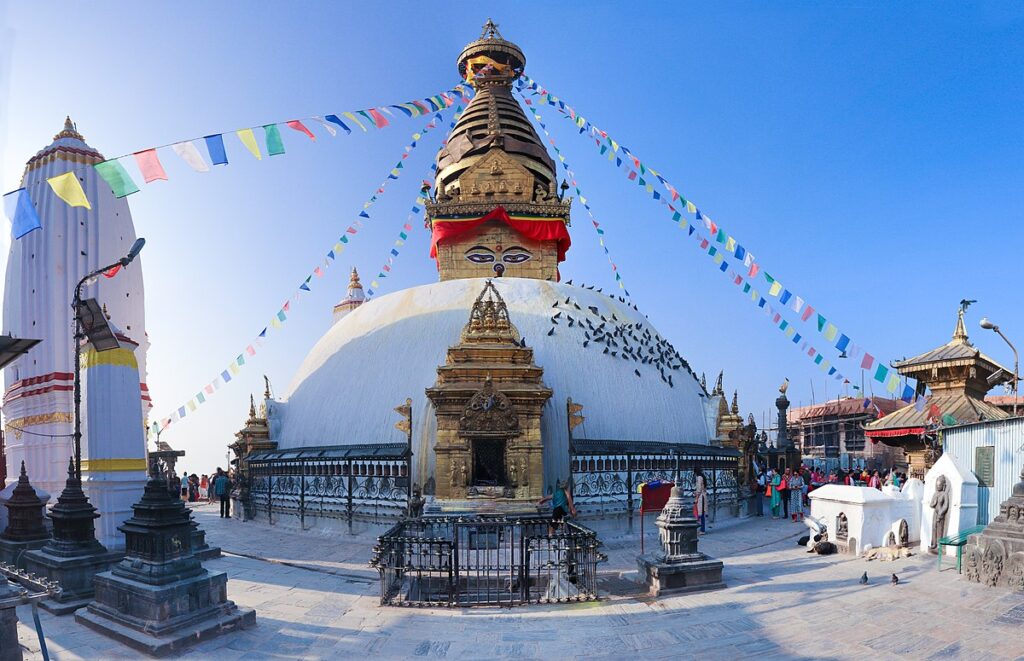
There were many temples dedicated to Lord Shiva in Nepal. One of the reasons Hinduism flourished there, I think, was because of the complete surrender of the locals to this deity, without restrictions. Trendy kids in leather jackets and boots would arrive on their motorcycles, laughing, chatting, walk into the temple, prostrate themselves in front of the Lord, apply the crimson paste on their forehead, and head off to their destination. It was all so casual and pleasing.
It was time for lunch and we bid goodbye to our driver and walked through narrow streets to a trendy restaurant named OR2K on Mandala Street in Thamel, the commercial district of Kathmandu. The lovely restaurant had a relaxed feel and served great Mediterranean, Asian and Indian food. We sat on cushions at low tables and enjoyed falafel and pizzas followed by desert. Amma preferred Indian food. We then split up: Amma, Appa and my daughter took the cycle rickshaw back to the hotel to rest and I walked around in Thamel for a couple of hours of fun shopping for all. Late in the evening we went to a lovely Tibetan, garden restaurant for a satisfying dinner of momos.
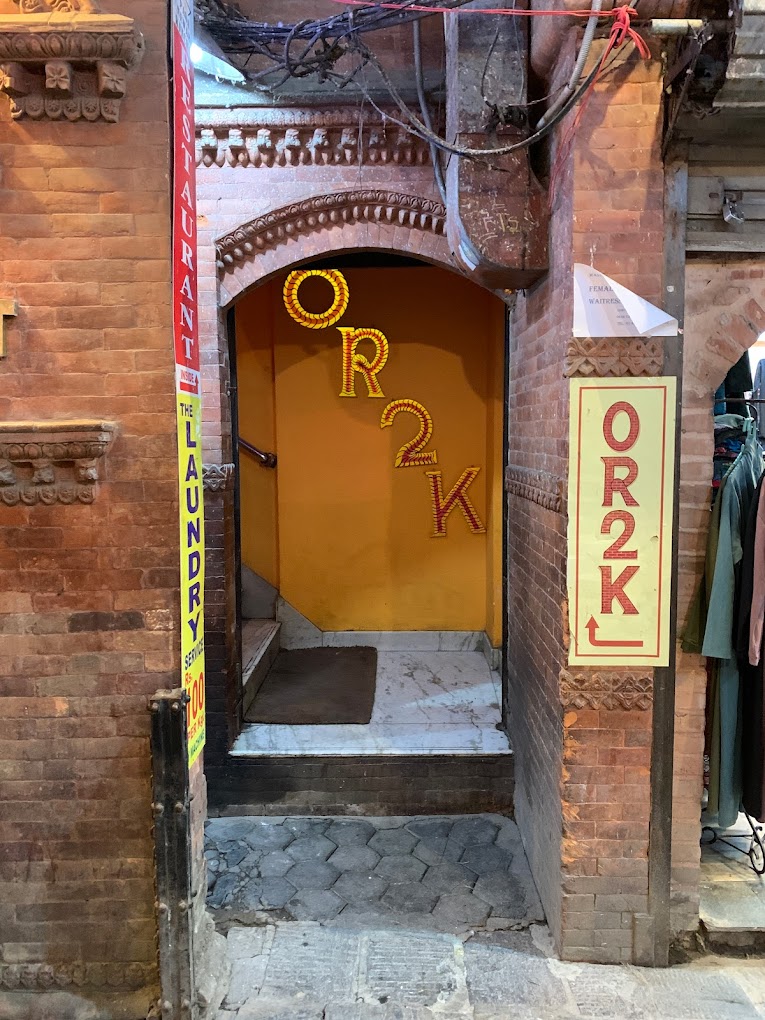

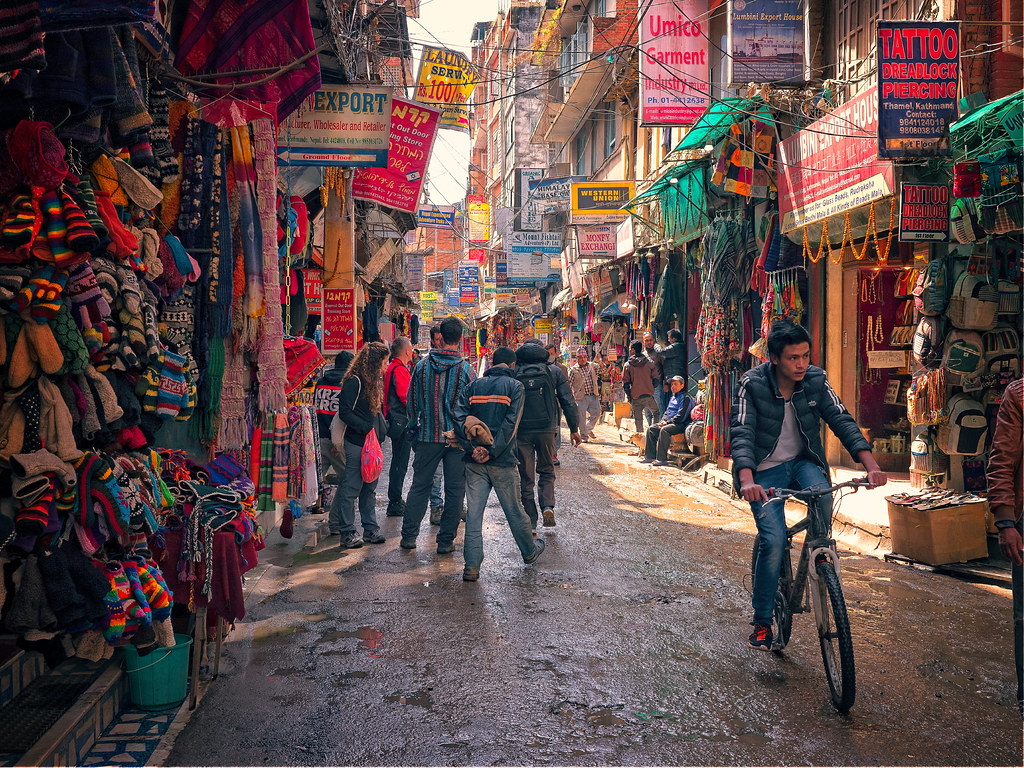
Day 3, and we flew to Pokhara by the domestic airline Buddha Air. Pokhara, the capital city of the Gandaki province, was the second-most populous city in Nepal after Kathmandu. It sat on the shore of the Phewa lake and the Annapurna Range, with three out of the ten highest peaks in the world—Dhaulagiri, Annapurna I and Manaslu – within 24–56 km of the valley. We were driven to the spectacular Fish Tail Lodge on Phewa Lake. To reach the lodge, we were ferried on a large raft to the other shore of the lake. We checked into two lovely round cottages adjacent to each other. The whole area was landscaped to merge with the surrounding. A stunningly beautiful resort. We walked along the lakeside in the evening and had delicious dinner at the lovely restaurant.
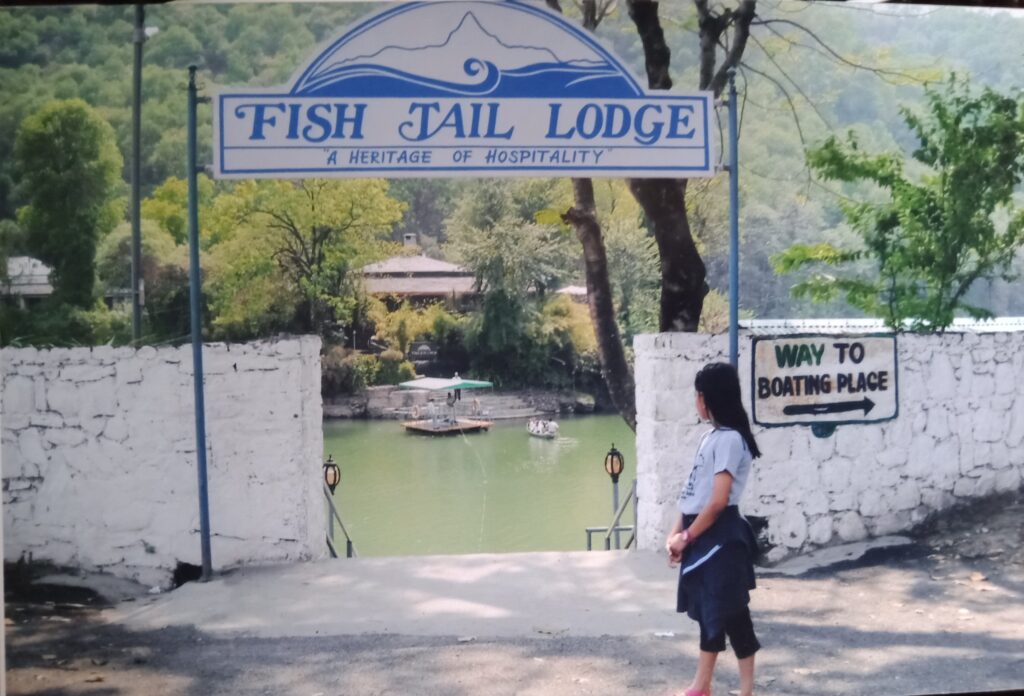
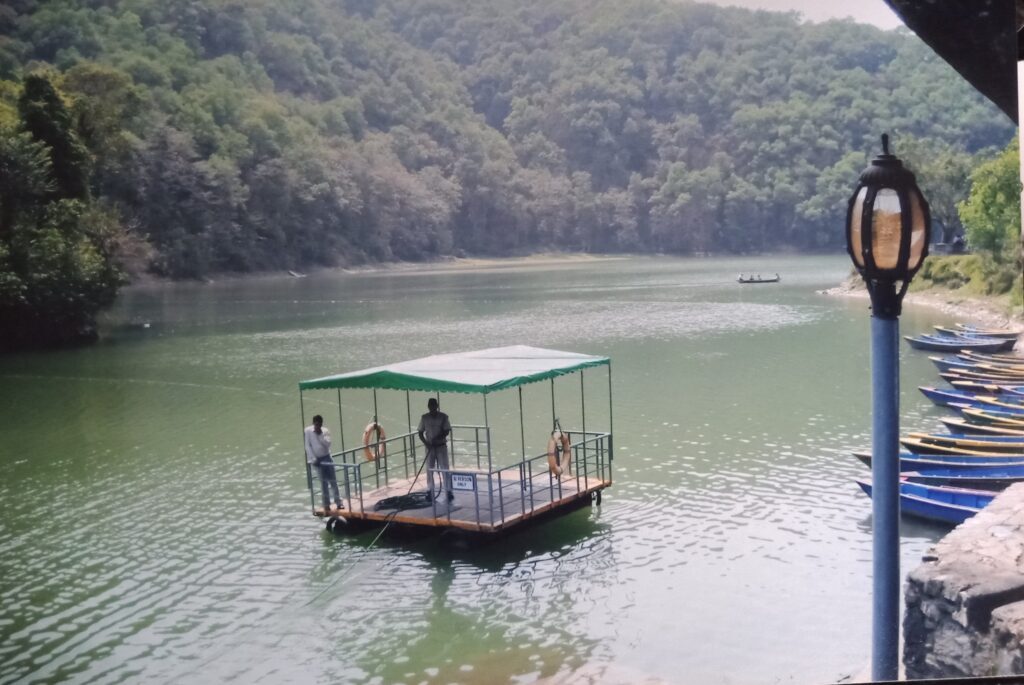
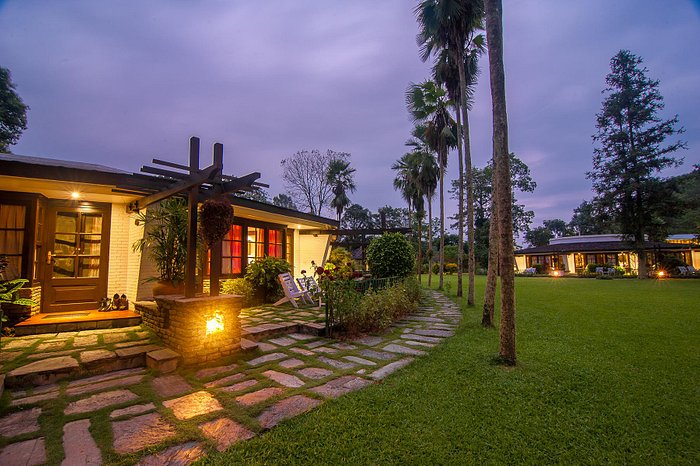
We woke at 5am the next morning to see the peaks of the Annapurna range from a viewing point in the lodge. Shivering in the chill, we waited for the clouds to part and the sun to rise. The kind bearer got us hot tea. After a few minutes we saw the Annapurna range and the Machhapuchhare (fishtail – after which the lodge had been named) peak, sacred mountain to the Nepalese. This mountain had never been scaled as the government of Nepal had never issued climbing permits.
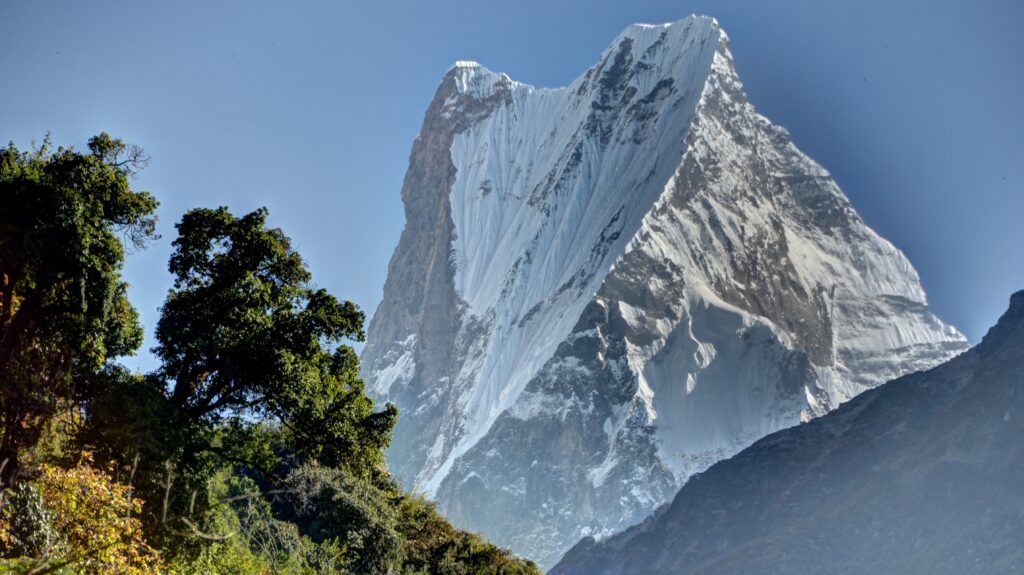
After breakfast we drove to see the sights of Pokhara. We walked up stone staircases of a small hill to the Bindhyabasini temple, dedicated to an incarnation of Kali or Parvarti, the consort of Shiva. There were smaller temples dedicated to Ganesha, Shiva and other gods on the beautiful hill top. The views of the Himalayas from one side and the city on the other were spectacular.
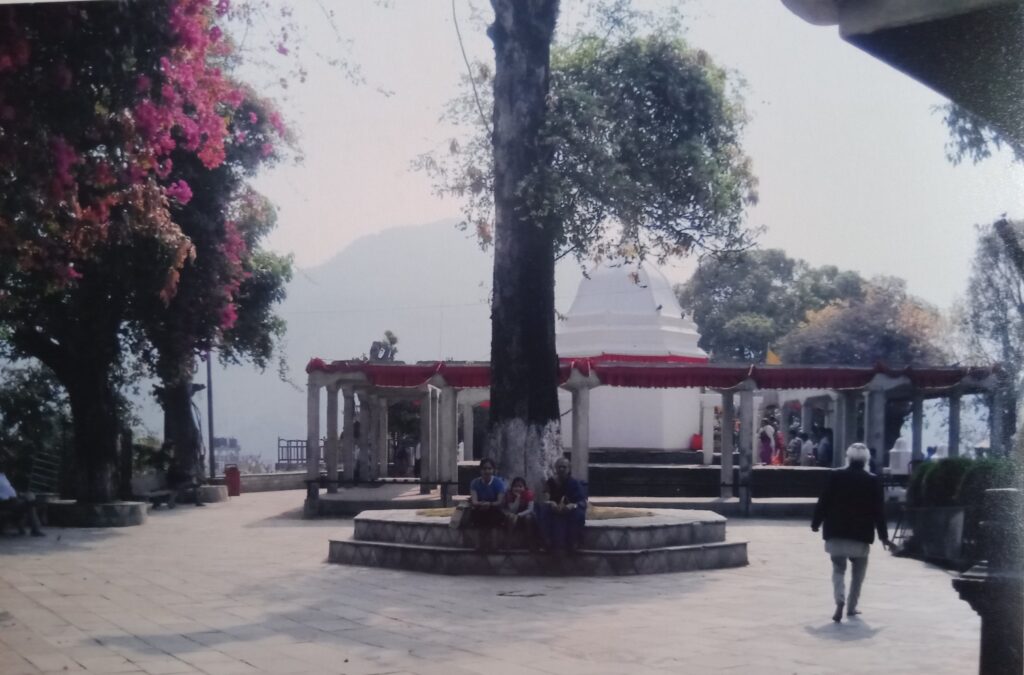
Our next stop five minutes away was the Seti River gorge. The Seti Gandaki River rose from the base of the Annapurna range, and flowed south and south-east past Pokhara and Damauli to join the Trishuli River near Devghat. My daughter was scared to look down into the deep, dark gorge. Another twenty-minute drive took us to the Davis Falls which was very crowed and not too impressive. The most interesting visit was to the Gupteshwar Mahadev cave near the falls.
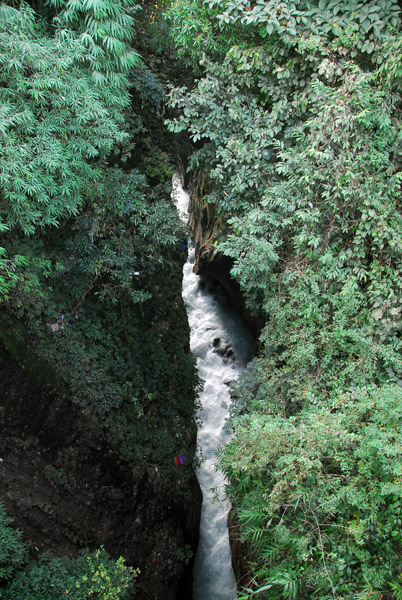
The Gupteshwar Mahadev Cave was a combination of Davis fall in the upstream and the cave in the downstream. We entered the dark cave but Appa slipped on the first step. So we took Amma and Appa back to the entrance where they waited for us. My daughter and I climbed down steep, wet, stairs in the dark, right to the bottom to see the Shiva linga and the flow of the stream from the Davis Falls above. It was a good opportunity for my daughter to lose her fear of the dark. She thoroughly enjoyed her experience and was full of enthusiasm when she met her grandparents seated above ground.
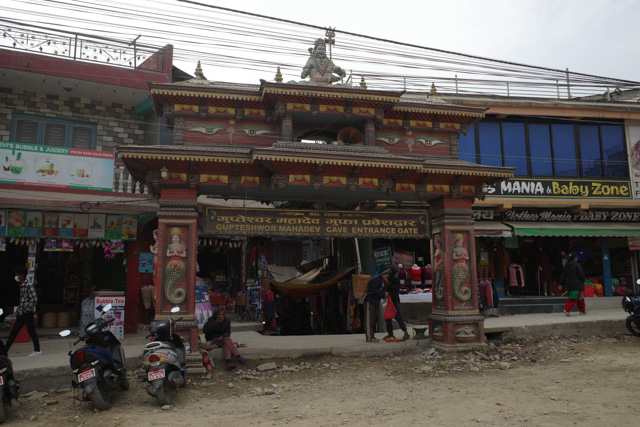
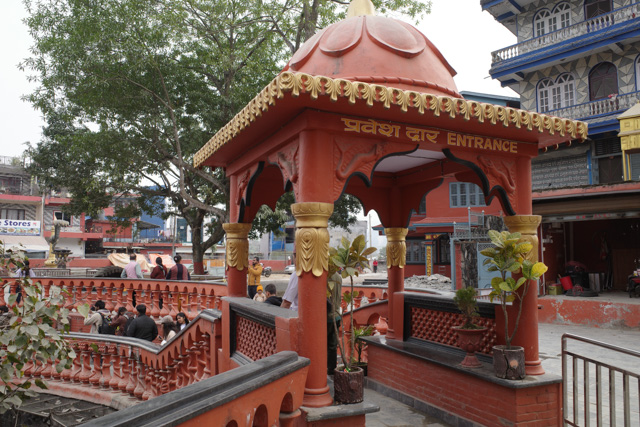
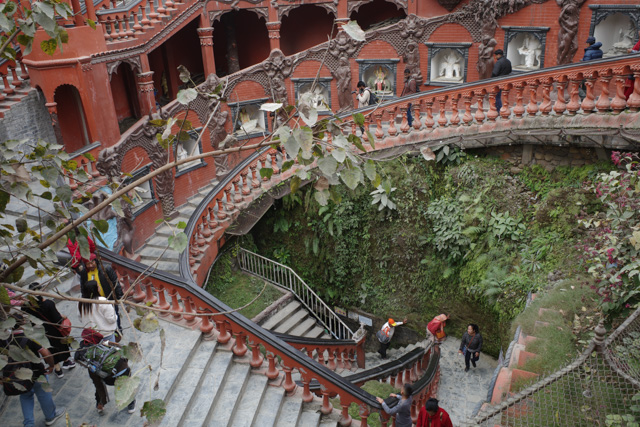
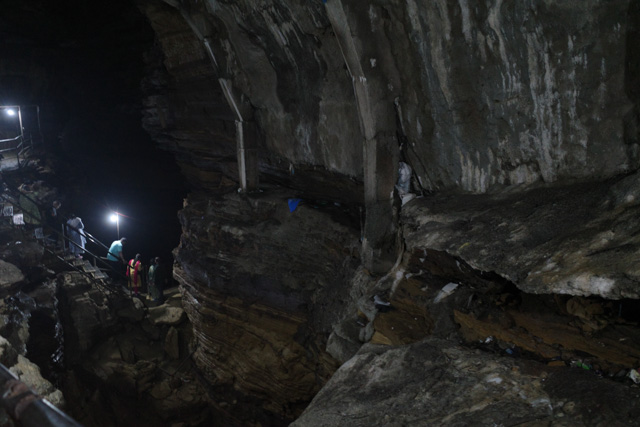
On the way back we picked up lunch from the German Bakery and returned to our cottages. The same evening, we went on a canoe ride on the Phewa lake to the Tal Barahi temple on a small island in the lake.
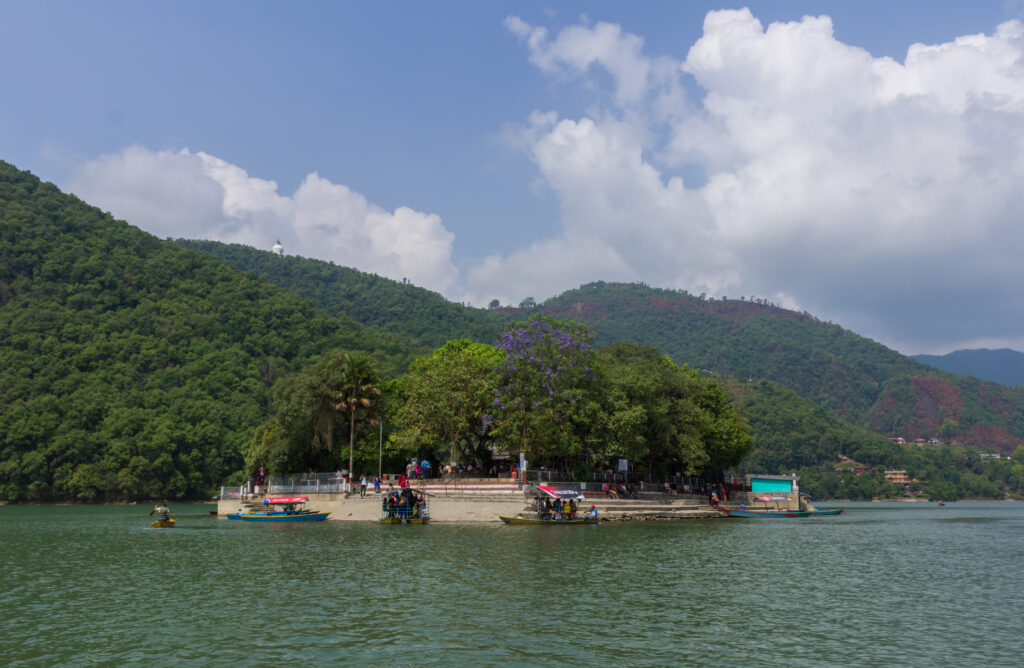
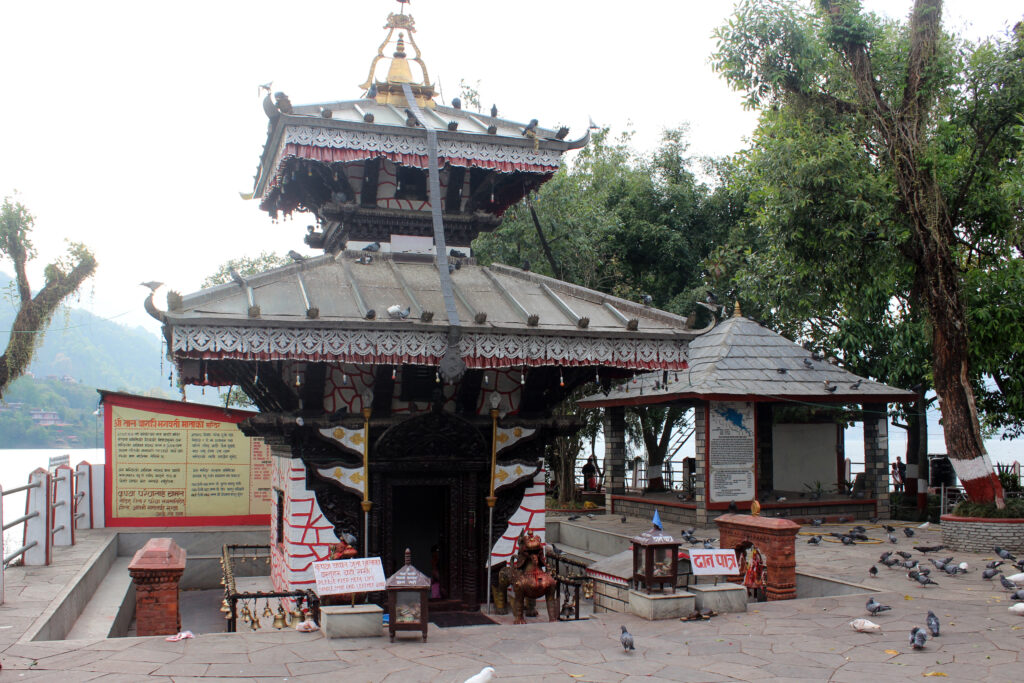
The next morning, day 5, we left for Chitwan National Park after breakfast. It was to be a long drive of 8 hrs traversing 205kms. We entered Gorkha land and after 4 hours stopped near the great Trishuli river for rafting. It was to be my daughter’s first experience down the river (Amma, Appa and I having rafted down the Ganges at Rishikesh) and she was excited and scared. After strapping into our life jackets the four of us, along with another family and the instructor glided gently into the river in our raft. The river was calm and there were low grade rapids we rowed over. My daughter was clinging to my legs and also trying to hold on to her grandparents, worried they might fall into the river. To her relief (and my dismay) we went ashore after a while. We climbed the steep, almost vertical sandy cliff to reach the road and drove for lunch to a small hut where the lady served a simple but delicious fare of dal, rice and potato curry.
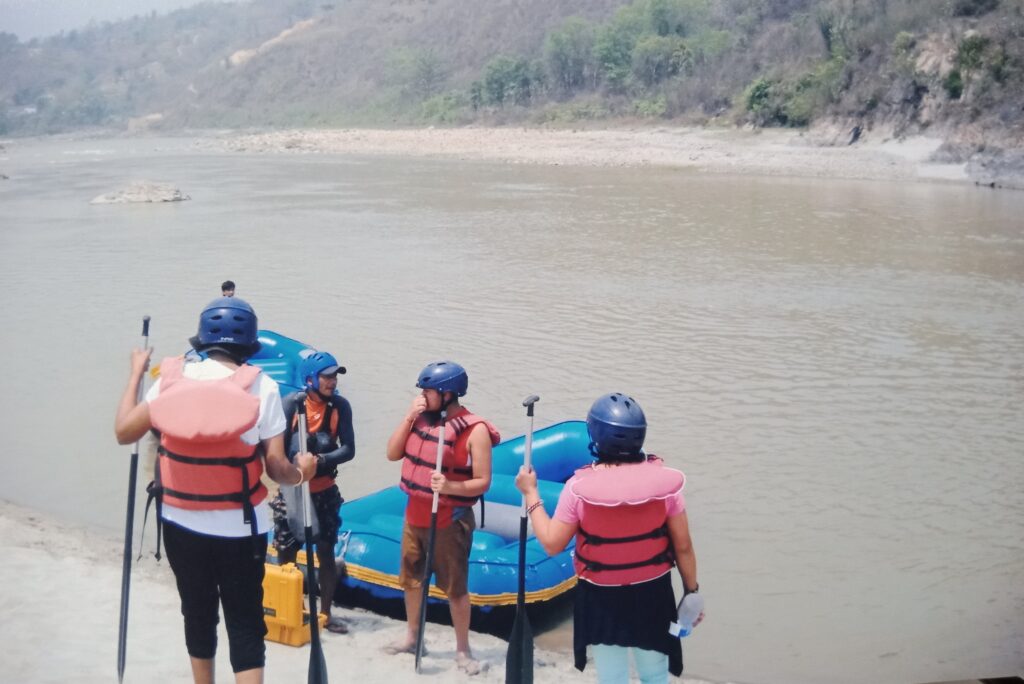
We changed into dry clothes behind the hut and drove on to the Sahid Lakhan Rural Municipality in Gorkha, Gandaki Province, where the Manakamana Temple was located, 1,300 metres (4,300 ft) above sea level in the Kafakdada Hill which sat in the confluence between Trishuli and Marsyangdi rivers. We took the cable car for the long ride to the top of the hill. The view was stunning with the Trishuli rushing below and the lofty Himalayas in the distance. After alighting, we stood in a long queue to get darshan of the goddess, who was believed to grant the wishes of her devotees. There was an enclosure near the temple where the tradition of sacrificing goats and birds for the goddess still continued. We reached the sanctum and the priest applied crimson tilak on our foreheads and gave us prasad and a piece of red cloth from the statue of the goddess. Grateful, we took the cable car back and continued our journey to Chitwan National Park.
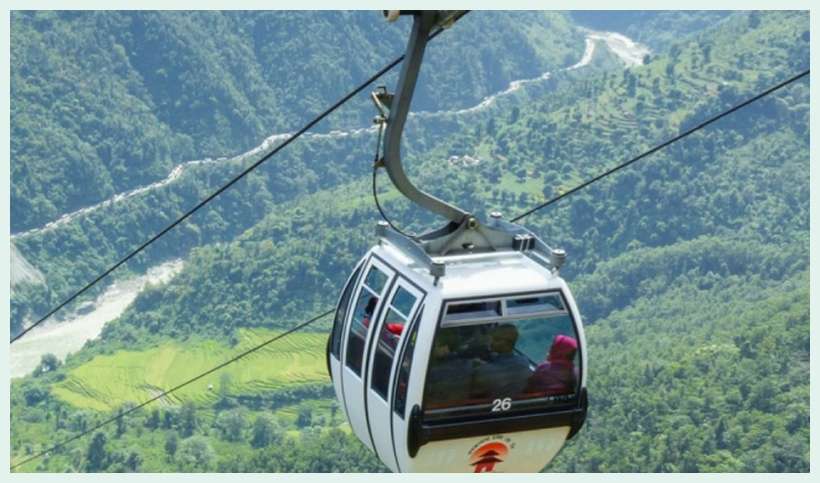

Late evening, we entered the Chitwan Maruni Sanctuary Lodge and checked into two beautiful cottages, had dinner and crashed into bed.
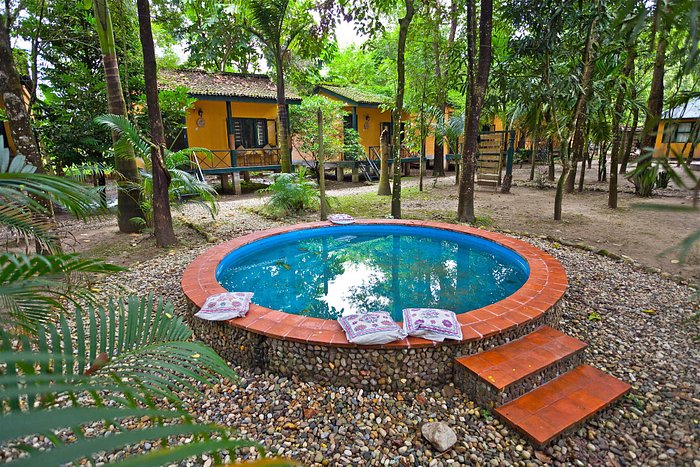
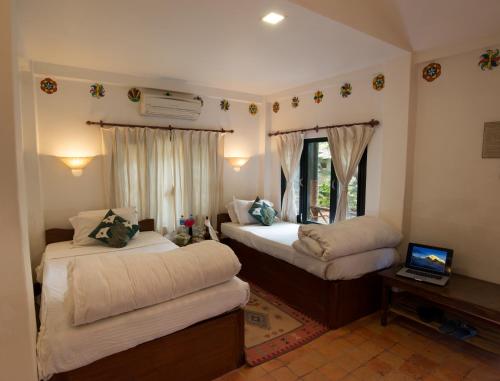
Fresh next morning, we first went on an elephant safari. Our elephant, Champa, was a bit temperamental that morning, but with coaxing from her mahout, she finally obliged. We crashed through the undergrowth, her powerful trunk parting branches with ease. She trumpeted a couple of times to our delight. We spotted a rhino family in a water hole and also some crocodiles. Chitwan was home to the Royal Bengal Tiger, the Indian leopard and the Indian rhinoceros and had the largest population of sloth bears. There were also a variety of birds along the banks of the Narayani-Rapti River in its North and West boundaries. It bordered with India in the South. We returned from the ride and back to the Lodge for lunch. At 3pm we left with our guides, one of whom was UNESCO-certified and very knowledgeable, on a 16km trek through the jungle. It was a fantastic experience!! We walked quietly in Indian file, with one guide in front and the second behind the four of us. They each carried a stone and a bamboo stick to frighten away predators if we met them. It was a thrilling experience. We walked in tiger territory (but didn’t spot him), waded through rivers four times, tracked rhinos, saw peacocks in flight, saw spotted deer, barking deer, antelope, monkeys and a wild boar. We saw the skull of a dead rhino half-buried in the ground and large holes dug by sloth bears looking for termites. We suddenly came across a large pool filled with grunting rhinoceros covered in mud. The guide taught my daughter bird calls and the call of the rhino. One of them found a peacock feather for her. It was a wonderful evening. Amma and Appa were fantastic, walking 16kms without breaking a sweat, even though they were in their 70s and 80s. A great motivation for our kids! Tired and happy, we walked back to the lodge for dinner and bed.
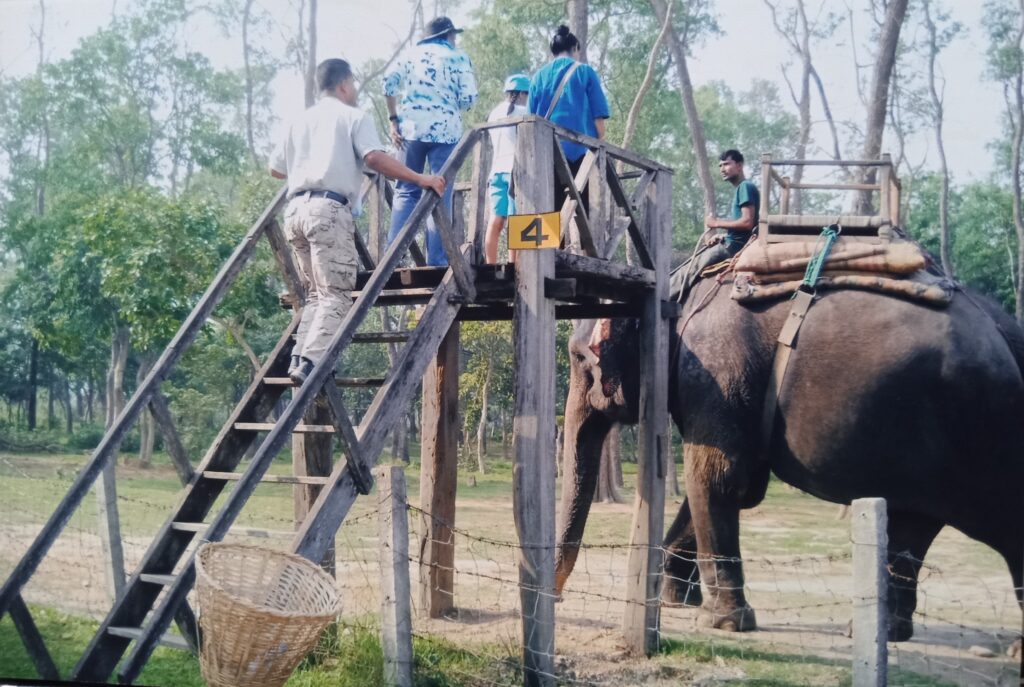
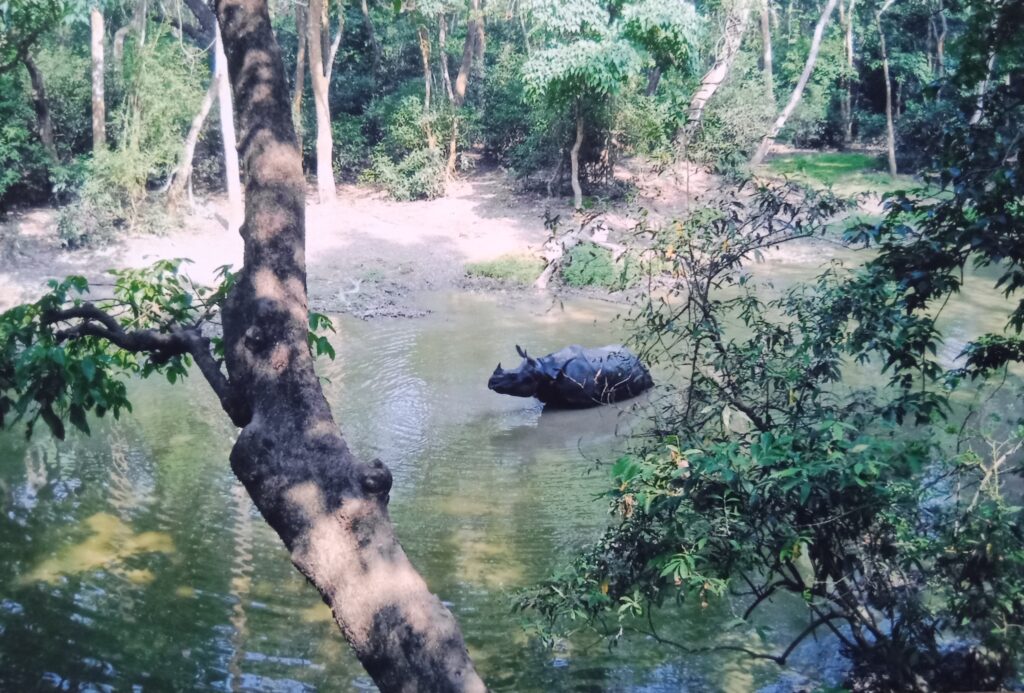
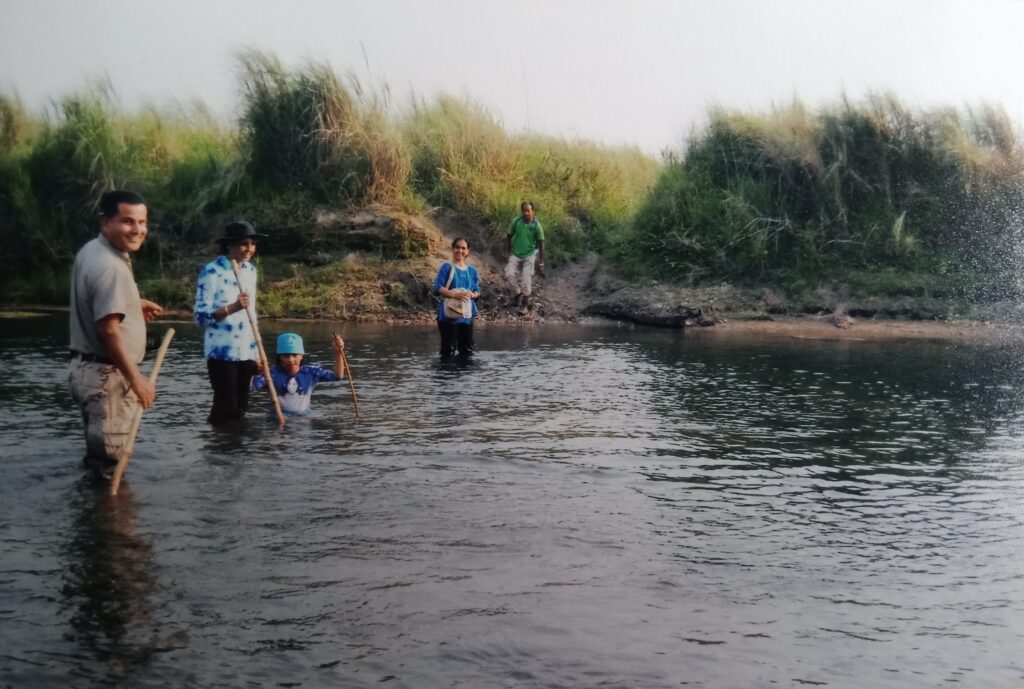
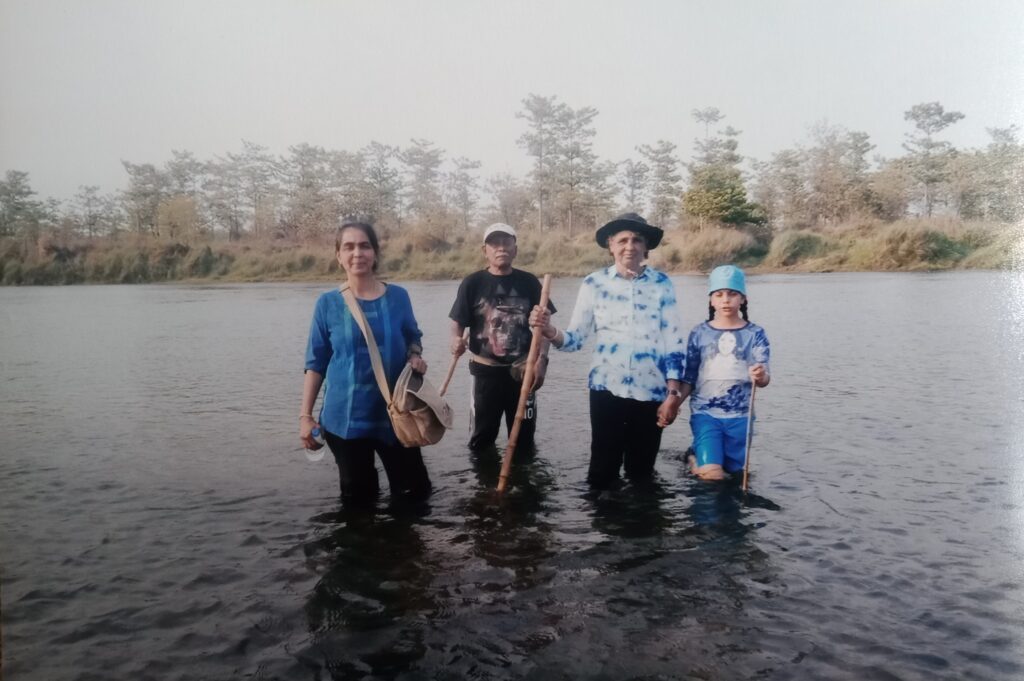
The next morning, we visited the elephant breeding centre. They were mainly from India, either gifted or exchanged for rhinos (elephant: rhino 4:1). A playful little fellow came away from his mother and mingled with the tourists, to everyone’s delight. As we drove out of the breeding centre, we spotted elephants bathing in the river. The guide took my daughter there and one of the mahouts lifted her on to the back of a bathing elephant, Poonam. She had a wonderful time being showered by the elephant’s trunk! As the elephants left the water, my daughter and I bowed deep with folded hands, in gratitude.
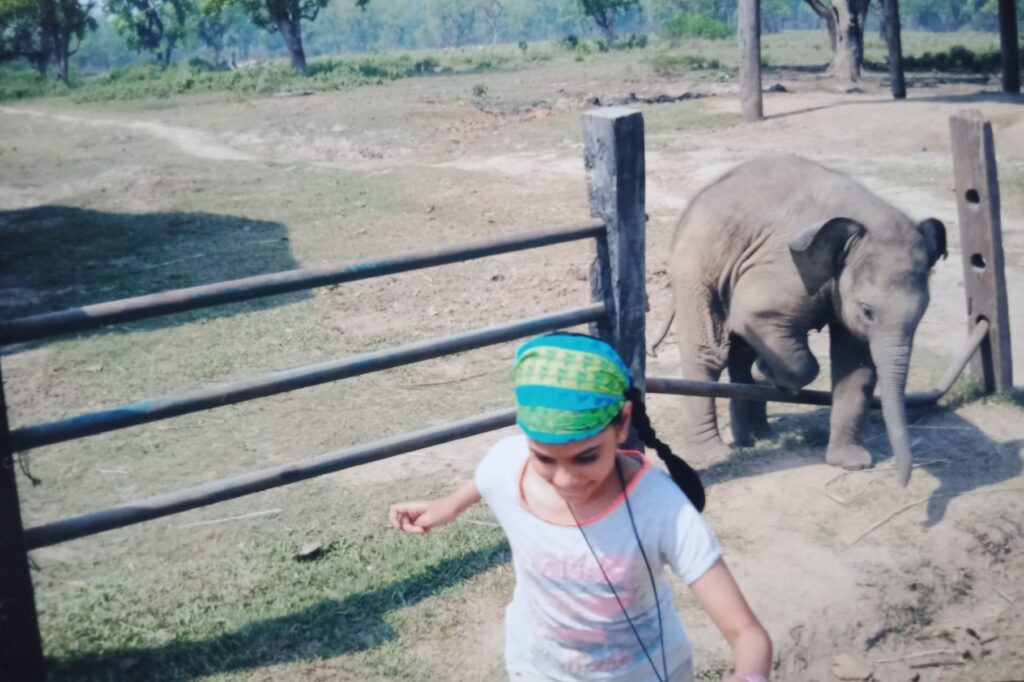
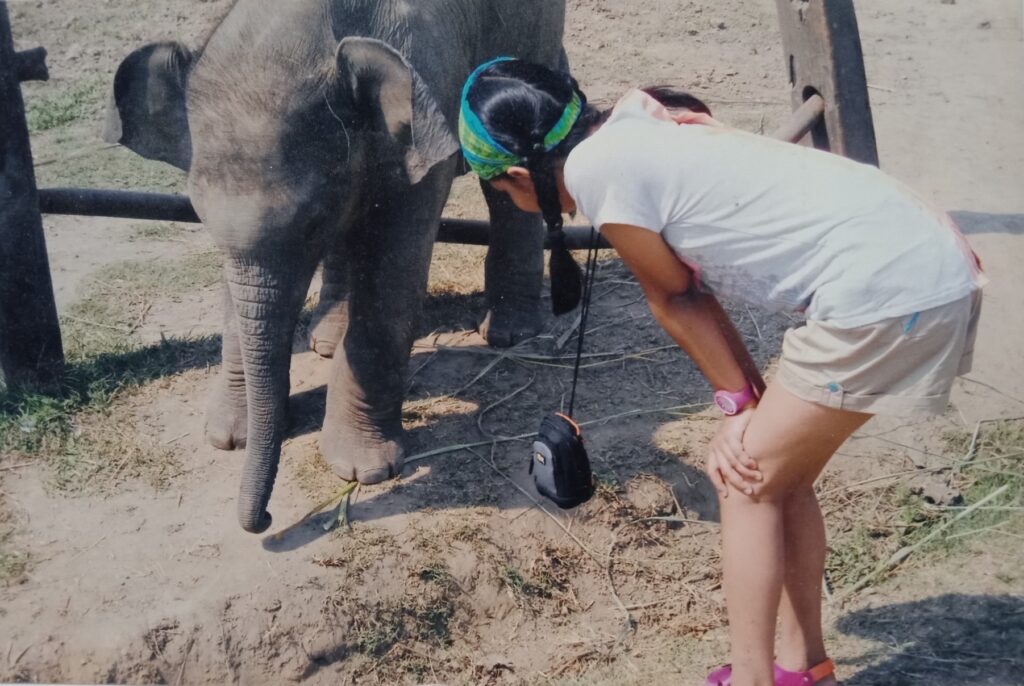
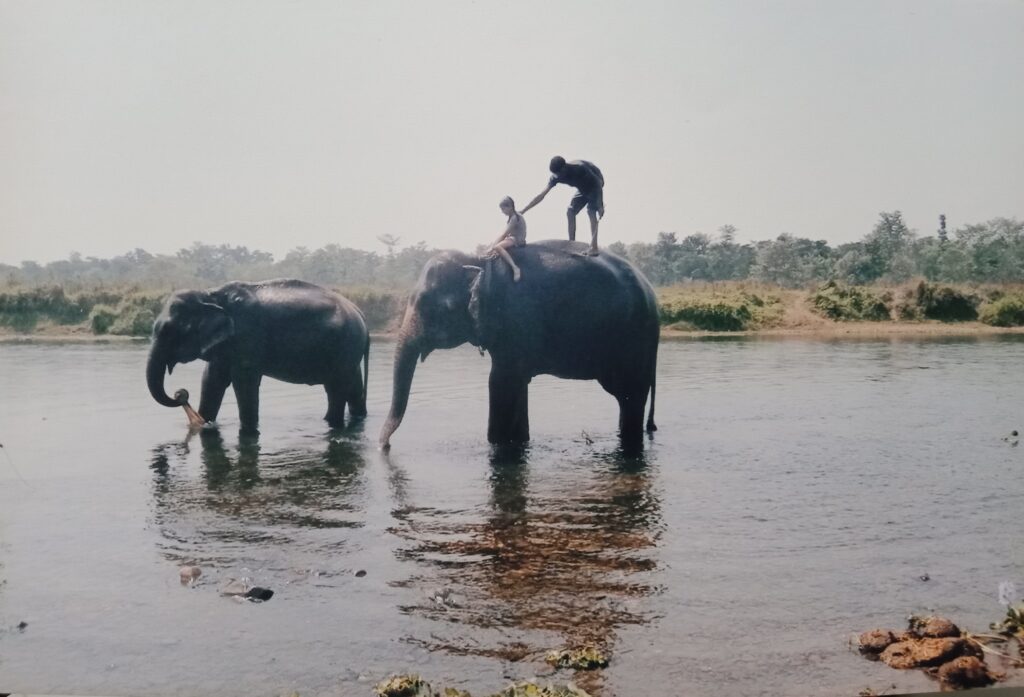
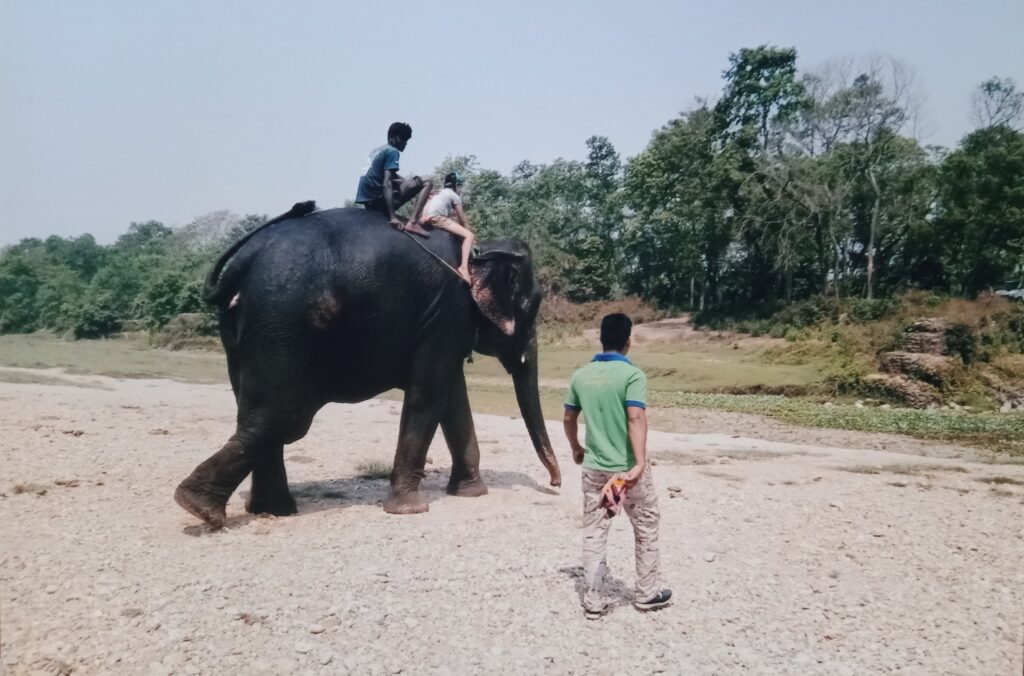
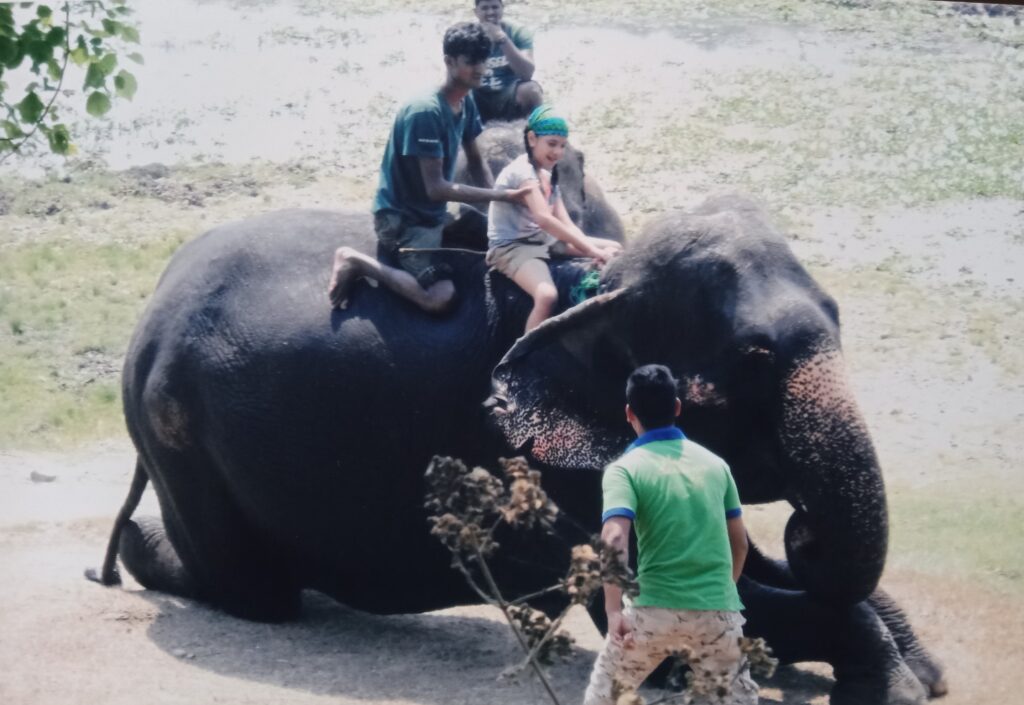
That evening we went on a canoe ride on the Rapti river. The shores were a birdwatcher’s delight! We spotted kingfisher, egret, hawk, purple crane, a majestic stork, wagtail, emerald dove, spotted pigeon, drongo and lapwing. There were gharials in the water and a huge crocodile with his mouth wide open. Another great day in Chitwan!
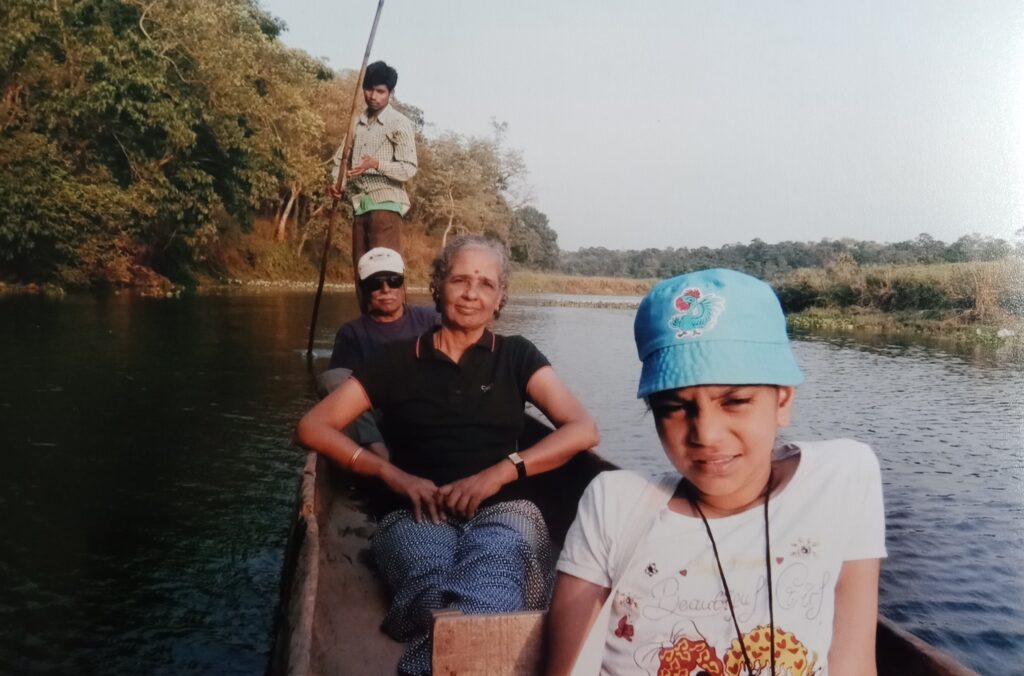
Day 8 of our trip, and we left Chitwan for the airport at Bharatpur after thanking our wonderful guides and hosts. We took the Buddha Air flight to Kathmandu and drove on further for an hour to Nagarkot. The flight itself was exciting as we could see the complete Himalayan range from our windows. A stunning sight! We were booked at the Country Villa, a fantastically located hotel whose balconies faced the awesome peaks of the Himalayas including Mount Everest. Which was what we were there for, to view the peaks at sunrise. However, it ended in disappointment as the clouds refused to lift early next morning. After waiting for a couple of hours we gave up, went down for breakfast, and then drove back to our hotel Manaslu in Kathmandu. We walked around the Darbar Square and market place (the impact of the recent earthquake was visible). We couldn’t get a glimpse of the Kumari or Living Goddess, as my daughter had hoped. We went to OR2K in Thamel for lunch and then back to our hotel.
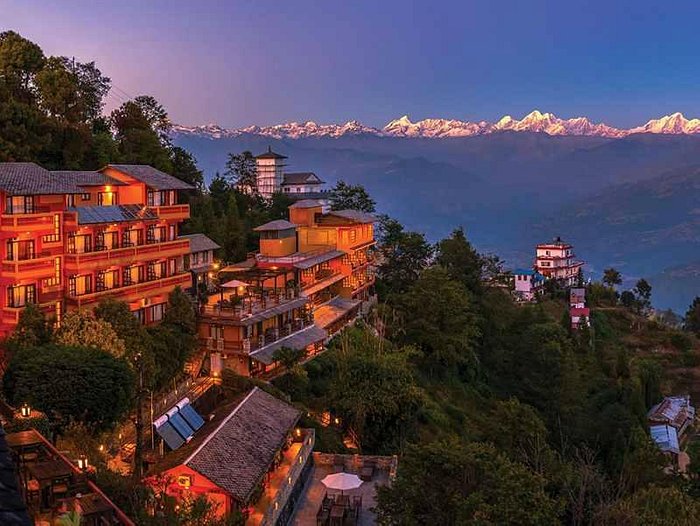
The next morning, we left for the airport at Kathmandu to fly back home to Mumbai. It was my daughter’s first trip abroad and we all had had a wonderful time. Appa went to the Ganesha temple as always and broke a coconut in gratitude for our safe return.
Leave a Reply